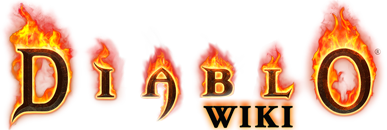- For their Diablo I: Hellfire and Diablo II: Lord of Destruction counterparts, see Runes
The Runes return in Diablo III in the form of spell enhancements. Unlike their second generation counterparts, Diablo III's Runes are not used in socketed items but are used in conjunction with spells to give many additional effects that may aid the player suit his/her playing style.
Purpose
The approach the Diablo III team has taken towards the overhaul of the hugely successful Runes of Diablo II has resulted in an even more brave and unique venture into game mechanics. Unlike the Diablo II Runes, which when inserted into socketed items would give bonuses like other socketable items, Diablo III's Runes can be used to increase the functionality of the actual character skills in the game.
Each Rune is named much more understandably than their previous incarnations, so that their effect when used is immediately discernible. Various combinations of these Runes may provide an almost infinite number of modifications to a spell, from increasing the number of projectiles to transforming a defensive shield spell into an offensive barricade. The myriad of options that lie before players in customizing their characters has increased many times over.
Mechanics
Although the exact mechanics of each Rune and how they work in terms of game balance is yet to be finalized and is liable to a number of revisions before the final game is released, what we know at the moment can be viewed in the respective Rune pages.
Recent developments have revealed Runes may be swapped in skills without destroying the older Rune that was attached. They drop quite commonly across the game but the higher level Runes are still hard to come across and are much more valuable and have been said to have spectacular effects on spells.
The Runes can only be used in real Skills and Spells and not on Passive Talents. Since the Runes were only implemented in the Wizard at BlizzCon, we now know that Spells in the first two tiers, level 1 and 6 have only one socket for any runic enhancements you may require. Whether the higher level skills will have more sockets is not known at the moment. It has also been revealed that there exist 10 Skill Rune slots for unused Runes in the Skill screen, so Runes will not fill up the inventory screen like previous iterations of the game.
It is not known whether certain combinations of Runes in Diablo III will create much more powerful spell effects like the Rune Words of Diablo II. Although, it has been stated highly by game designer Jay Wilson for breaking the game by allowing all characters access to all the other character's skills.
In game
The actual inventory image of Runes have not yet been seen but from the gameplay video, their dropped images appear more or less similar to the Runes from Diablo II. They have names like Rune of Lethality and Rune of Multistrike that can allow the player to judge what they do before they pick it up.
Blizzard now has 7 or 8 different Runes created, with 5 to 6 different quality levels like Minor, normal and Major created. Their rune creation process has them thinking what kinds of effects would many spells benefit from, and if they cover a wide range of spells from all characters, they proceed to create the Rune. The Runes will have varying levels of power depending on their quality level. For example, a Minor Multistrike Rune attached to the Skull of Flame will make projectile skip along the ground once , but higher quality Runes like the Major Multistrike Rune may raise the of bounces and the distance traveled by the projectile.
As mentioned before, Runes drop quite often in Diablo III and can be found and used almost like Potions were in the previous games. Higher level Runes are much harder to come by and compensate their rarity by granting spectacular effects to the spells they are used in.
Template:D3runes
